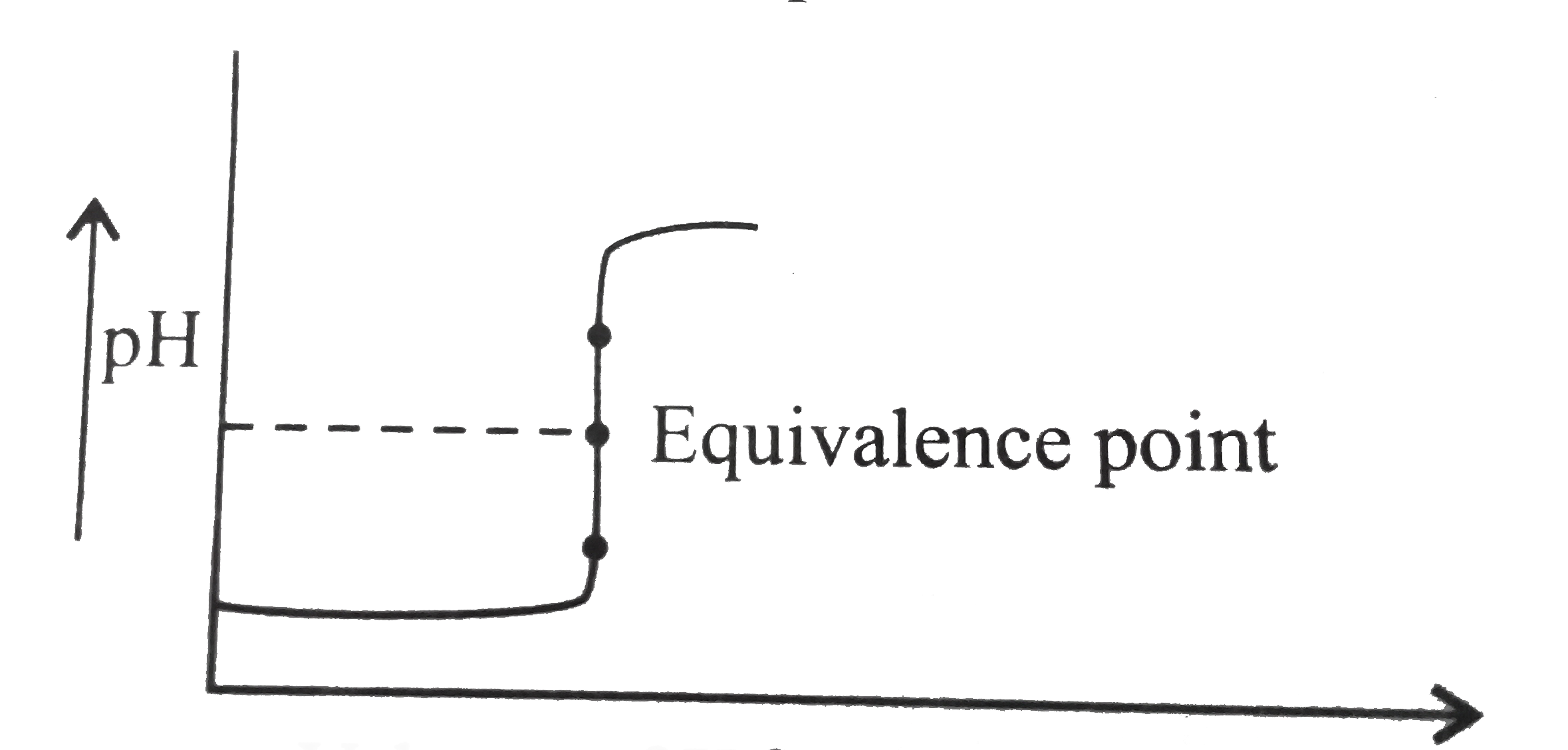Iodimetric titrations are usually performed in neutral or mildly alkaline (pH = 8) or weakly acidic solutions. Which statement is not valid for this observation ?
In strong alkaline solution, I2 disproportionate to I−andIO−
In strong acidic solutions , starch used to detect the end point tends to hydrolyse or decompose
I− produced during titration tends to be oxidized by dissolved oxygen in acidic medium
Reducing power of reducing agent is increased in strong acidic medium
The correct Answer is:D
To solve the question regarding iodimetric titrations and determine which statement is not valid, we will analyze each statement step by step.
Step 1: Analyze the first statement
Statement: In strong alkaline solution, iodine disproportionates to I- and IO-.
Explanation: In a strong alkaline solution, iodine (I2) can undergo disproportionation. The reaction can be represented as:
I2+2OH−→IO−+I−+H2O
In this reaction, iodine is oxidized to iodate (IO-) and reduced to iodide (I-). Since both oxidation and reduction occur simultaneously, this statement is true.
Step 2: Analyze the second statement
Statement: In strong acidic solution, starch used to detect the endpoint tends to hydrolyze or decompose.
Explanation: Starch acts as an indicator in iodimetric titrations by forming a blue complex with iodine. In strong acidic conditions, starch can hydrolyze, leading to the breakdown of this complex. Thus, the color change from blue to colorless or light yellow indicates the endpoint. Therefore, this statement is also true.
Step 3: Analyze the third statement
Statement: I- produced during titration tends to be oxidized by dissolved oxygen in acidic medium.
Explanation: Iodide ions (I-) can indeed be oxidized by dissolved oxygen in acidic conditions. The reaction can be represented as:
2I−+O2+4H+→I2+2H2O
In this process, iodide ions are oxidized to iodine. Thus, this statement is true.
Step 4: Analyze the fourth statement
Statement: Reducing power of reducing agent is increased in strong acidic medium.
Explanation: In acidic conditions, the reducing power of a reducing agent typically decreases because the environment favors oxidation reactions. For example, the reaction of I2 can reverse in acidic medium, leading to:
2I2+4H+→2I−+O2+2H2O
Here, I2 acts as an oxidizing agent rather than a reducing agent. Therefore, the reducing power is not increased; it is actually decreased. This statement is not valid.
Conclusion
The statement that is not valid for the observation regarding iodimetric titrations is:
Reducing power of reducing agent is increased in strong acidic medium.
Final Answer
The correct answer is Option D: "Reducing power of reducing agent is increased in strong acidic medium."
Statement: In strong alkaline solution, iodine disproportionates to I- and IO-.
I2+2OH−→IO−+I−+H2O
In this reaction, iodine is oxidized to iodate (IO-) and reduced to iodide (I-). Since both oxidation and reduction occur simultaneously, this statement is true.
Statement: In strong acidic solution, starch used to detect the endpoint tends to hydrolyze or decompose.
Statement: I- produced during titration tends to be oxidized by dissolved oxygen in acidic medium.
2I−+O2+4H+→I2+2H2O
In this process, iodide ions are oxidized to iodine. Thus, this statement is true.
Statement: Reducing power of reducing agent is increased in strong acidic medium.
2I2+4H+→2I−+O2+2H2O
Here, I2 acts as an oxidizing agent rather than a reducing agent. Therefore, the reducing power is not increased; it is actually decreased. This statement is not valid.
The statement that is not valid for the observation regarding iodimetric titrations is:
Reducing power of reducing agent is increased in strong acidic medium.
The correct answer is Option D: "Reducing power of reducing agent is increased in strong acidic medium."
Similar Questions
The end point of iodometic titrations is detected by adding starch just near end point and not at the beginning of titration. Which statement is not valid for this falt?
View SolutionAcetic acid is titrated with NaOH solution. Which of the following statement is correct for this titration?
View SolutionThe pH of a solution which is three times as acidic as pure water is
View SolutionThe pH of a neutral solution is 7.
What is the pH of an acidic solution, less than or greater than 7?
View SolutionHydrolysis of salts form acidic, basic or neutral solutions. The salt which on hydrolysis forms a neutral solution is
View SolutionCH3COOH is titrated with NaOH solution. Which of the following statements is true ?
View SolutionReaction of KMnO4 in neutral or very weakly alkaline solution can be represented as:
View SolutionThe pH values of solutions marked as A, B, C, D and E are 4, 1, 11, 7 and 9 respectively.
(i) Arrange these solutions in the decreasing order of pH.
(ii) Arrange these solutions in the increasing order of hydrogen ion concentrations.
(iii) In the list of the given solutions identify :
(a) Neutral solution
(b) Highly alkaline solution
( c) Highly acidic solution
(d) Moderately acidic solution
(e) Moderately basic solution
View SolutionThe pH of a neutral solution is 7.
What is the pH of an alkaline solution, less than or greater than 7?
View SolutionIn acid-base titration react rapidly to neutralise each other. Equivalence point is a point at which the acid and the base (or oxidising agent and reducing agent) have beem added in equivalent quantities. The end point in the point at which the titration stops. since the purpose of the indicator is to stop the titration close to the point at which the acid and base were added in equivalent quantities, it is important that the equivalent point and the end point be as close as must change colour at a pH close to that of a solution of the salt of the acid base. Singificantly, the pH changes most rapidly near the equivalent point. The exact shape of a titration curve depends on Ka and Kb of acid and base.

The pH at equivalence point is
View Solution
